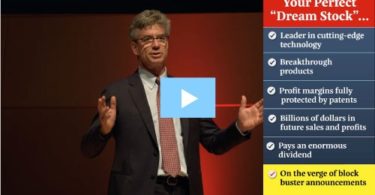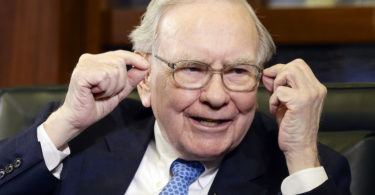Introduction: VF Corporation (NYSE: VFC) – owner of brands like Vans, The North Face, and Timberland – is under pressure from both operational challenges and legal scrutiny. The company’s stock has plummeted from historic highs (over $80 in early 2020) to the mid-teens ([1]), erasing billions in market value. A shareholder class action lawsuit filed in 2025 alleges that VF misled investors about its financial health and key brand performance ([2]). Meanwhile, VF has had to slash its nearly half-century-old dividend, grapple with high debt, and fight declining sales in core brands. This report dives into VF’s dividend policy, leverage, valuation, and the risks and red flags – including the class action – that investors should heed.
Class Action Lawsuit Overview
- Exposed to market crashes
- Interest-rate and inflation risk
- Possible penalties on early distributions
- Backed by physical, tangible gold
- Transfer tax-free & penalty-free
- Privatize and control your retirement
Investors recently lodged a securities class action against VF Corporation, claiming the company painted an overly rosy picture of its prospects – particularly for its critical Vans brand ([2]). The complaint asserts that during the October 2023 to May 2025 period, VF’s management “created a false sense of security” about revenue projections and downplayed risks related to seasonal demand and macroeconomic headwinds ([2]). In reality, Vans’ performance deteriorated sharply, culminated by a reported 20% drop in Vans revenue in Q4 FY2025, far worse than the optimistic public statements had suggested ([2]). When VF finally disclosed these disappointing results – attributing the downturn partly to intentional cuts of unprofitable sales – the stock price collapsed nearly 16% in a single day ([2]). The lawsuit accuses VF and certain executives of Securities Exchange Act violations, essentially alleging that investors were misled by management’s positive spin until the truth emerged ([2]) ([2]). While the legal process will take time, the allegations raise serious concerns about management credibility and transparency at VF, compounding the fundamental challenges discussed below.
Dividend Policy & History
VF Corporation’s dividend was once a defining strength – the company had increased its annual dividend for 49 consecutive years before recent troubles ([3]). This nearly made VF a Dividend King, a status rarely interrupted by a cut. However, by late 2022 and 2023, a confluence of factors put the payout under strain. VF took on debt during the pandemic (notably to acquire streetwear brand Supreme in 2020) just as inflation drove up costs and consumers pulled back on discretionary spending ([3]). The stock price plunged over 60% in 2022 ([1]), which caused the dividend yield to surge to around 8–9% – a red flag indicating the market’s doubts about sustainability ([3]). Indeed, the payout became unsafe relative to earnings and cash flow, and VF’s board made the difficult decision to slash the dividend in late 2023 ([3]).
Today, VF’s quarterly dividend stands at just $0.09 per share, down sharply from $0.51 a year earlier ([4]). This cut in Q4 2023 ended VF’s decades-long growth streak and reduced the annual dividend to $0.36. At the current share price in the mid-teens, the dividend yield is approximately 2.4% ([5]) – modest, but more realistic given the company’s stressed finances. The cut has substantially improved dividend coverage: over FY2024, VF paid out $303 million in dividends, less than half the prior year’s payout ([6]) ([6]). With VF generating about $1.0 billion in operating cash flow in FY2024 (after a negative operating cash flow in FY2023) ([6]), the reduced dividend is now on a much sounder footing. Management has signaled an intent to continue paying a regular dividend, but meaningful growth of the payout will likely remain off the table until earnings recover and leverage is reduced. Income-focused investors who once relied on VF for dividend growth have had to recalibrate expectations in light of the cut ([7]).
Leverage and Debt Maturities
VF’s balance sheet leverage is a central concern. The company accumulated debt during expansion years (including financing the Supreme acquisition) and to navigate COVID-19 disruptions. As of March 2024, VF carried about $5.7 billion of total debt (down from $6.6 billion a year prior) ([6]) ([6]). This debt load is high relative to the company’s size and cash flows, and it includes several near-term maturities. In fact, VF faced a $1.0 billion term loan due December 2024 and a $750 million bond due April 2025, which together forced the company to marshal resources for repayment or refinancing ([6]). The recent sale of the Supreme brand for $1.5 billion in cash was a strategic move to raise funds – VF acknowledged that selling Supreme (bought for $2.1B in 2020) was necessary to focus on core businesses and manage debt ([8]). Proceeds from that sale, finalized in late 2024, were earmarked to pay down obligations and ease the near-term debt burden ([8]).
Even so, VF’s debt maturity calendar remains daunting beyond 2024. The company has sizable bonds coming due each year from 2025 through 2030 (ranging roughly from $500–$750 million per year), including notes due April 2025, March 2026, April 2027, etc., and then additional notes in 2032, 2033, and 2037 ([6]) ([6]). Managing these maturities will be challenging if operating performance doesn’t improve, especially since refinancing costs have risen. Notably, VF lost its investment-grade credit rating in late 2024 – S&P Global downgraded VF’s debt to “BB” (junk status) from BBB- ([9]). S&P cited continued weak earnings and declining revenue in VF’s top brands, and projected that VF’s leverage would remain well above 4.5× EBITDA in fiscal 2025 ([9]) ([9]). Moody’s followed by downgrading VF to a Ba2 credit rating in mid-2025, with a negative outlook ([10]). These downgrades reflect a more “speculative” credit profile and have real consequences: VF will face higher interest rates on new debt and potentially less access to capital markets, making the reduction of debt a top priority for management.
Coverage and Cash Flows
Highly leveraged companies like VF must carefully mind their coverage ratios – i.e. how well earnings and cash flow cover fixed obligations. This has become a weak spot for VF. According to Moody’s, as of March 2025 VF’s Debt-to-EBITDA was about 5.1× and EBITA/Interest coverage only ~2.1× ([10]). An interest coverage near 2× is low, indicating that operating profits only barely cover interest expenses, with little cushion if earnings falter. Indeed, VF’s interest costs have risen as debt remained high and some floating-rate borrowings became more expensive (VF’s weighted average interest rate on debt rose to 3.5% in FY2024 from 2.6% the year before) ([6]). The company has been implementing cost savings and a restructuring program (“Reinvent”) to boost profitability, but progress is gradual. In the meantime, coverage metrics suggest heightened financial risk – until earnings increase or debt is reduced, VF is not far from a scenario of financial strain if there are any further profit shortfalls.
On a cash flow basis, VF’s latest results offered some relief. In FY2024 (year ended March 2024), the company generated over $1.0 billion in cash from operating activities ([6]), a sharp improvement from the prior year’s cash outflow of ~$656 million (which had been worsened by a one-time $875 million tax litigation payment) ([6]). With capital expenditures trimmed to about $146 million plus additional software and other investments ([6]), VF achieved positive free cash flow, which it has used to pay down debt and maintain liquidity. The dividend cut significantly improved cash coverage – the $0.36 annual dividend now costs roughly $140 million per quarter, a level much more easily funded by current cash flows than the previous payout. As a result, VF expects to generate modest free cash flow even after dividends, which is critical for debt reduction. In fact, management has guided to continue prioritizing free cash flow for deleveraging, aiming to reach a net leverage ratio of ~2.5× in the medium term ([11]) ([11]). Achieving that target will likely require earnings growth (especially a turnaround at Vans) and strict working capital management. For now, liquidity is adequate – VF ended March 2024 with about $675 million in cash on hand ([6]) and has an undrawn credit revolver, and Moody’s expects the company can meet its next obligations (like the ~$540 million due March 2026) through a combination of free cash flow and revolving credit if needed ([10]) ([10]). Still, the margin for error is thin (Moody’s notes VF’s covenant cushion on its revolver is limited) ([10]) ([10]), so improving interest coverage and cash generation remains a key open question.
Valuation and Performance
After the steep decline in its share price, VF Corp’s valuation might appear cheap at first glance – but it reflects the company’s troubled fundamentals. At roughly $14–$15 per share, VF’s market capitalization is only about $5.5–$6.0 billion ([1]), which is approximately 0.6× annual revenues (VF had ~$9.5 billion in sales in the year to March 2025) ([10]). Such a low price-to-sales ratio is indicative of the market’s low confidence in future profits. In terms of earnings, VF’s GAAP net income has been minimal recently (the company reported net losses in some recent quarters), so trailing P/E ratios are not meaningful. On a forward-looking basis, analysts expect a partial rebound in earnings – the stock currently trades around 19× projected FY2025 earnings (i.e. an earnings yield of ~5%) ([9]) ([9]). This is not particularly cheap given VF’s elevated risks, and implies that much of the turnaround optimism is already priced in. By comparison, more stable apparel peers command higher earnings multiples but with far stronger balance sheets and growth outlooks. VF’s enterprise value to EBITDA (EV/EBITDA) is also telling: including the debt, VF’s EV is roughly $11–$12 billion, which is about 10× its current EBITDA (which has declined with Vans’ troubles). A 10× EV/EBITDA for a low-growth, indebted retailer is not a bargain by typical standards, especially with investor confidence shaken.
It’s also worth noting how significantly shareholder value has eroded. VF’s stock is down about 80% from its peak in early 2020 ([1]), and even in just the last two years it lost over half its value amid dividend cuts and earnings misses. There have been brief rebounds – for example, when VF announced a new CEO (Bracken Darrell) and a turnaround plan in mid-2023, or when occasional earnings beat expectations, the stock saw short-lived jumps (such as a 22% surge on one positive quarter in late 2024) ([12]). But overall, VF has vastly underperformed the broader market. The dividend yield at current prices is ~2.5% ([5]), which offers some income but is no longer the high-yield allure it was before the cut. In sum, VF’s valuation metrics reflect a company in distress – low relative to past norms, yet not a clear “value” play given uncertain recovery. Bulls are essentially betting on a successful turnaround (especially at Vans and in supply chain improvements) to drive earnings higher, which would in turn make today’s price look cheap. Bears, on the other hand, point to the debt load, ongoing consumer weakness, and the possibility that structural challenges in VF’s brand portfolio could persist, warranting a depressed valuation.
Risks, Red Flags, and Open Questions
VF Corporation faces a convergence of risks and red flags that investors must weigh carefully:
– Brand Weakness & Turnaround Uncertainty: The Vans brand’s steep decline is at the heart of VF’s troubles. Vans, historically VF’s largest brand, saw a 24% revenue drop in fiscal 2024 ([6]) and continued to underperform into 2025. Management has launched a turnaround initiative – including leadership changes (the Vans global brand president was replaced, with the CEO stepping in interim) ([6]) – but it remains uncertain whether Vans can regain its former popularity and growth. Other key labels like The North Face and Timberland have held up better but are also experiencing pressure in a weak consumer environment ([9]). VF is essentially banking on a successful reinvention of Vans and improved product cycles; failure to stabilize its core brands would prolong or deepen the company’s earnings slump.
– High Leverage & Refinancing Risk: VF’s debt load and leverage ratios are high, as detailed earlier. This increases financial risk substantially – interest eats up a large share of profits, and required debt repayments could strain cash resources. With credit ratings now below investment grade, any refinancing of maturing debt will come at higher interest rates ([9]). In a worst case, if sales and cash flows falter, VF could face liquidity issues or covenant breaches (Moody’s already flagged the thin covenant cushion) ([10]) ([10]). The company’s plan to deleverage to 2.5× net debt/EBITDA is ambitious and may be hard to achieve if the business doesn’t improve significantly. Open question: Will VF need to take more drastic actions – such as selling additional assets or even equity issuance – to manage its balance sheet?
– Dividend Sustainability: The drastic cut has alleviated immediate pressure, but VF’s dividend is no longer the rock-solid commitment it once was. If the turnaround stalls or a recession hits consumer spending, even the smaller $0.09 quarterly dividend could come under review. Management remains committed to paying something to shareholders ([11]) ([11]), but future dividend growth appears off the table until fundamentals recover. For income investors, VF has shifted from a dividend-growth story to a higher-risk yield play, warranting caution.
– Management and Governance Concerns: VF has undergone leadership turmoil – long-time CEO Steve Rendle abruptly stepped down in late 2022 amid poor results ([13]) ([14]). His successor, Bracken Darrell (the former Logitech CEO), took the helm in mid-2023 and is still relatively new to the apparel industry. There have also been changes in other top roles (e.g., a new Chief Financial Officer and Chief Accounting Officer appointments in 2024-2025). While new leadership can bring fresh strategy, the transition period carries execution risk, and the lawsuit’s allegations of misleading communications cast a shadow on governance. Furthermore, an unusual decision in early 2025 to release quarterly results via an investor presentation without the usual detailed earnings press release was flagged by some observers as a transparency red flag ([7]). This move, coinciding with a reduced dividend, suggests management may be sensitive about highlighting certain metrics, raising questions about disclosure practices. Rebuilding investor trust will require consistent delivery on promises and clear, candid communication.
– Macro & External Risks: As a consumer discretionary company, VF is vulnerable to macroeconomic conditions. High inflation, rising interest rates, or a downturn in consumer confidence can hit apparel demand – especially for VF’s outdoor and lifestyle gear, which consumers may delay buying in tough times. Geopolitical factors also pose risks: VF has significant international operations and supply chains, so issues like tariffs or trade restrictions can hurt. In fact, VF cited tariff uncertainties and consumer caution as reasons for recent sales shortfalls ([15]). Continued tariff or trade disruptions (particularly relating to China, a key market and sourcing location) remain an overhang. Additionally, industry trends such as the shift to direct-to-consumer and e-commerce require adaptation; VF is investing in these areas, but competition from more nimble digitally-native brands is intense.
– Legal and Reputational Risk: The current securities class action lawsuit is an external risk factor. While such lawsuits are not uncommon after a stock plunge, they can result in costly settlements or judgments if the company is found at fault. Beyond potential financial impact, the allegations claim VF misled investors about its business – if proven, this would significantly tarnish management’s credibility. Even if the case is eventually settled without admission of wrongdoing (a likely scenario), it keeps VF in a negative spotlight and could distract management. It also underscores the importance of accurate guidance going forward; any optimism from VF will be met with some skepticism given this recent history.
Open questions abound for VF Corp. Will the turnaround plan truly reinvigorate Vans and other brands, or is the consumer preference shift more permanent? Can the company execute on cost cuts and inventory management to restore margins without further damaging brand equity? How quickly can leverage come down – and what happens if the economy softens in the interim? For now, VF is in a show-me phase: investors will need to see evidence of stabilizing sales and improving profits in coming quarters to believe in the recovery. Until then, VF remains a high-risk story. The stock’s depressed price factors in a lot of bad news, but as the class action title warns, investors should stay alert – both to the legal proceedings and the fundamental developments – when considering VFC. Each quarterly result and corporate update will be critical indications of whether VF Corp is on the path to regaining its footing or if further challenges lie ahead.
Sources: V.F. Corporation SEC filings and investor materials; credit rating agency reports; Reuters and Business Wire news releases; and class action lawsuit announcements ([2]) ([2]) ([3]) ([8]) ([9]) ([10]) ([7]).
Sources
- https://companiesmarketcap.com/vf-corp/stock-price-history/
- https://globenewswire.com/news-release/2025/09/15/3150130/0/en/Johnson-Fistel-Announces-Class-Action-Lawsuit-Against-V-F-Corporation-VFC-on-Behalf-of-Investors.html
- https://dividendpower.org/vfc-dividend-cut/
- https://vfc.com/investors/stock-information/dividends-and-splits
- https://za.investing.com/equities/vf-corp
- https://sec.gov/Archives/edgar/data/103379/000010337924000008/vfc-20240330.htm
- https://fashionunited.ie/news/business/despite-positive-q3-vfs-q4-outlook-and-dividend-cut-raise-concerns/20250129509733
- https://reuters.com/markets/deals/essilorluxottica-buy-supreme-heidelberg-engineering-2024-07-17/
- https://nasdaq.com/articles/vf-corp-credit-rating-cut-junk-sp-global
- https://sgbonline.com/vf-corps-debt-ratings-downgraded-by-moodys-on-vans-turnaround-challenges/
- https://fashionunited.com/executive/report/vf-expects-its-transformation-program-to-reduce-debt-and-drive-profitability/2024103162629
- https://reuters.com/business/retail-consumer/vans-owner-vf-corp-soars-22-turnaround-plan-starts-pay-off-2024-10-29/
- https://sgbonline.com/exec-vfs-shares-take-hit-on-ceo-exit-guidance-cut/
- https://cnbc.com/2022/12/05/vf-corp-lowers-full-year-guidance-announces-ceo-is-retiring.html
- https://reuters.com/sustainability/sustainable-finance-reporting/vf-corp-misses-quarterly-revenue-estimates-tariff-uncertainty-hits-demand-2025-05-21/
For informational purposes only; not investment advice.




